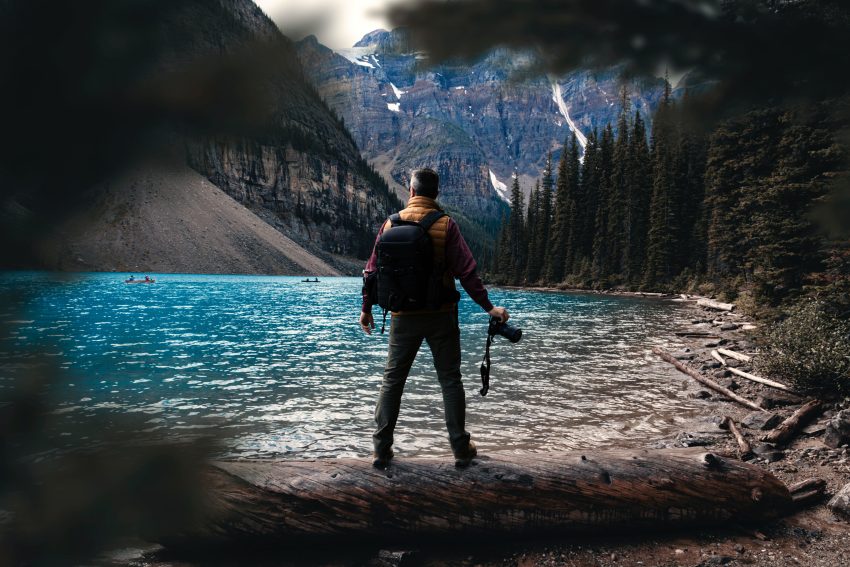You’ve found the definitive resource on outdoor photography in the great outdoors. With springtime’s arrival comes the opportunity to take stunning photographs outside.
Here in this article, we’ll be discussing a number of helpful strategies that will allow you to improve your summertime photography abilities and make the most of the summer months.
Let’s dig in and learn the ins and outs of taking stunning landscape photographs, including the best techniques for composition, lighting, and post-processing.
What Is The Meaning Of Outdoor Photography?
Before diving into the tips, we have to know what photography in the outdoors means.
The term refers to the practice of taking pictures in unstaged settings. It creates stunning images by incorporating parts of nature into the composition.
It calls for flexibility in response to shifts in subject behavior, environmental factors, and illumination.
Taking pictures in the great outdoors allows you to capture breathtaking scenery, record historical events, and stir up strong feelings. It gives photographers a platform for self-expression, dialogue, and advocacy for the environment.
Embrace the Golden Hour
Understanding the Golden Hour of Outdoor Photography
For some of the best outdoor photography lighting, the golden hour is the time immediately after sunrise and before sunset, when the sun’s rays are at their most gentle, warm, and ethereal.
Take advantage of the opportunity to snap some breathtaking photos of the outdoors, people, and more.
Planning for the Golden Hour
Find out exactly when sunrise and sunset are where you are by consulting a website or app. Get there early to scope out the area and set up your equipment.
Exploring Different Lighting Conditions
Try new compositions, points of view, and lighting during the golden hour. Take note of how the shifting light affects your subjects and the overall feel of your photographs.
Compose With Care
Rule of Thirds
One of the most popular outdoor photography ideas is to create a 3×3 grid and center your subject along one of the intersections. You can add harmony and appeal to your photographs by employing this method.
Leading Lines
Use manmade or natural features like as highways, trails, or rivers to lead the eye across the picture.
Framing
Trees, arches, and windows are just a few examples of natural frames you may use to emphasize depth and center attention on your subject.
Incorporating Foreground Interest
Including engaging foreground components that lead the viewer into the scene will add depth and context to your photographs.
Capture Vibrant Landscape
Scout Locations in Advance
Check out reviews, look at maps, and investigate potential filming sites to find magnificent settings that fit your idea.
Enhance Colors
If you want your landscape photos to pop and make it a vibrant summer photography session, use a circular polarizer to cut down on reflections and increase color saturation.
Create Depth with Layers
In order to give the impression of depth and scale in your landscape compositions, you need to include components in the front, the middle ground, and the backdrop.
Utilize Tripods During Outdoor Photography
Use a solid tripod to assist stable your camera so that you can take longer exposures in order to get landscape photographs that are clear and detailed.
Master Wildlife and Nature Photography
Patience is Key
When taking pictures of wild animals, you should be prepared to spend a lot of time monitoring them and waiting for the right moment to snap a picture that captures their action or their distinctive emotions.
Telephoto Lenses
To get the best out of your outdoor photography guide, investing in a high-quality telephoto lens will allow you to bring distant subjects closer while still allowing them to behave in a natural way and keeping you at a safe distance.
Use Natural Light
If you want your wildlife photos to look natural and not like they were staged, you should avoid using a flash.
Gear and Accessories for Outdoor Photography
Choose the Right Camera and Lenses
Choose a camera and lenses that will work well outdoors by thinking about things like resolution, weather sealing, and lens options.
Pack Essential Accessories
Be ready for anything by always having a spare battery, memory card, lens filter, lens cleaning kit, tripod, and camera case on hand.
Protecting Your Equipment
Make sure that your camera and lenses are protected from the elements by purchasing a hood for your lens and a waterproof cover for your camera.
Experiment with Filters
Attempt long exposures with moving water or clouds by utilizing neutral density (ND) filters, and try out polarizing filters to cut down on reflections and boost color saturation.
Post-processing and Final Touches
Edit with Care
To improve your photographs, use an editor like Adobe Lightroom or Capture One. Fine-tune your photographs by adjusting exposure, contrast, and color balance and applying selected changes while preserving the natural feel.
Sharpening and Noise Reduction
Bring out the finer details in your photographs by using the proper sharpening procedures. Reduce noise in high ISO images with noise reduction.
Printing and Sharing
If you want to inspire people and get comments from the photography community, you should print your favorite summer images and display them or post them on social media.
Conclusion
If you put into practice the outdoor photography advice given, you should have no trouble taking breathtaking photographs outside this summer.
Invest in appropriate equipment, learn to take advantage of the golden hour, seek out breathtaking vistas, photograph stunning wildlife, and give your photos a last polish in post-processing.
A gorgeous portfolio of wonderful summer moments will emerge from your practice, patience, and sharp eye. Take your camera and go outside; let your imagination run wild!


